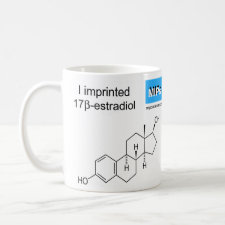
Authors: Afifi R, Elnwishy N, Hannora A, Hedström M, Mattiasson B, Omran H, Alharbi OML, Ali I
Article Title: SPE and HPLC monitoring of 17-β-estradiol in Egyptian aquatic ecosysetms.
Publication date: 2016
Journal: Journal of Liquid Chromatography & Related Technologies
Volume: 39
Issue: (8)
Page numbers: 428-434.
DOI: 10.1080/10826076.2016.1174712
Abstract: Solid-phase extraction and HPLC methods are described for monitoring of 17-β-estradiol residues in Egyptian aquatic ecosystems (water, fish, mollusks, sediment, and drinking water) at the Nile River, Suez Canal region, and northeast of Egypt. Molecular imprinted polymer was prepared and used in extraction. High performance liquid chromatography (HPLC) columns used were Supelcosil C18 and Nucleosil C18. The mobile phases used were different combinations of water and acetonitrile. The concentration of 17-β-estradiol in water, aquatic animals, and sediment samples were of 265.13-7988.12 μg/L, 0.503-96.167, and 0.775-11.884 μg/kg, respectively. Marine lake was contained with high levels of 17-β-estradiol (P < 0.05). Similarly, the Nile River downstream showed high levels of 17-β-estradiol. The detected concentrations in mollusks were significantly higher than those detected in fish. Tilapia fish did not show 17-β-estradiol. Contrarily, low concentrations were detected in the rivulet streams supplied by the Nile River. Besides, 17-β-estradiol was also detected in the sediments at low levels. Detection of 17-β-estradiol in the Egyptian ecosystems attracted attention toward heavy reliance on some esterogenic medicinal products in Egypt. The monitoring of 17-β-estradiol in other water bodies was recommended. Besides, the development of methodologies of bioremediation to eliminate 17-β-estradiol from the Egyptian and other water resources of the world was also suggested
Template and target information: 17-β-estradiol, E2
Author keywords: 17-β-Estradiol, marine organisms, Sediment, SPE-HPLC, water



Join the Society for Molecular Imprinting

New items RSS feed
Sign-up for e-mail updates:
Choose between receiving an occasional newsletter or more frequent e-mail alerts.
Click here to go to the sign-up page.
Is your name elemental or peptidic? Enter your name and find out by clicking either of the buttons below!
Other products you may like:
 MIPdatabase
MIPdatabase









